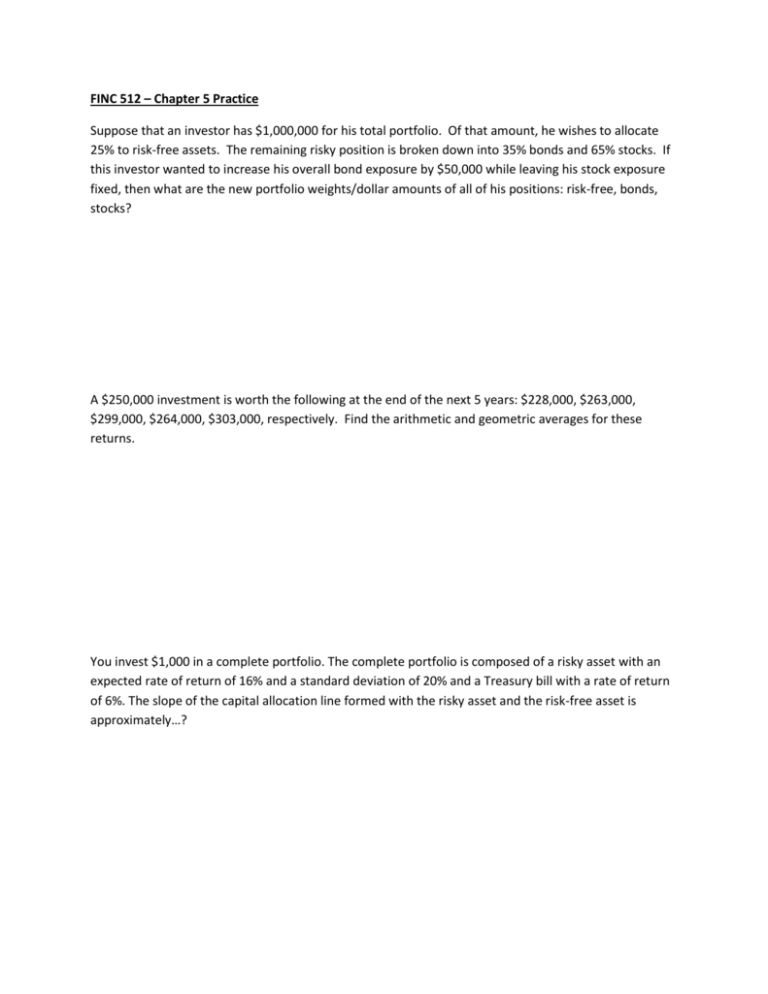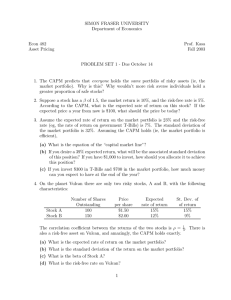Chapter 5 Extra Practice
advertisement

FINC 512 – Chapter 5 Practice Suppose that an investor has $1,000,000 for his total portfolio. Of that amount, he wishes to allocate 25% to risk-free assets. The remaining risky position is broken down into 35% bonds and 65% stocks. If this investor wanted to increase his overall bond exposure by $50,000 while leaving his stock exposure fixed, then what are the new portfolio weights/dollar amounts of all of his positions: risk-free, bonds, stocks? A $250,000 investment is worth the following at the end of the next 5 years: $228,000, $263,000, $299,000, $264,000, $303,000, respectively. Find the arithmetic and geometric averages for these returns. You invest $1,000 in a complete portfolio. The complete portfolio is composed of a risky asset with an expected rate of return of 16% and a standard deviation of 20% and a Treasury bill with a rate of return of 6%. The slope of the capital allocation line formed with the risky asset and the risk-free asset is approximately…?











